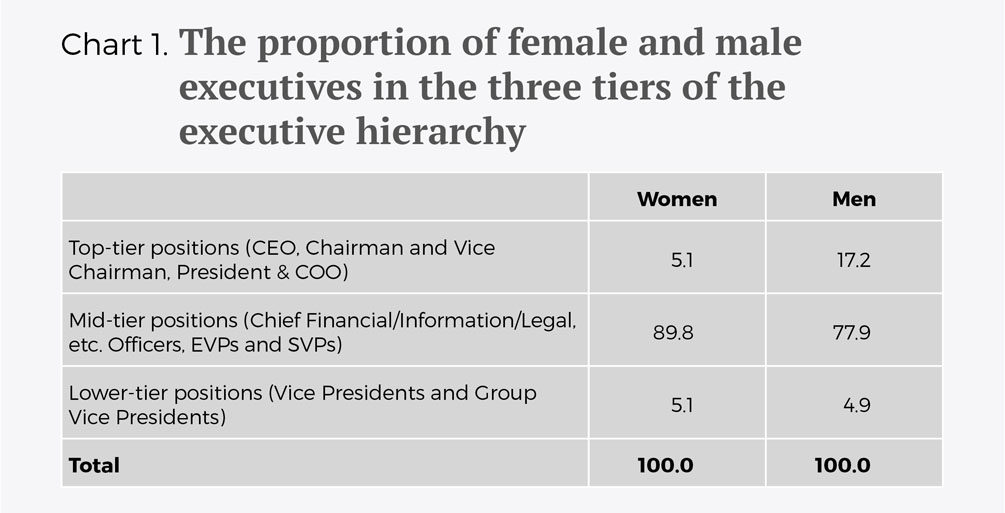In an article published in Harvard Business Review, we (myself and co-authors Rocío Bonet of IE Business School and Peter Cappelli at the Wharton School) compared the career histories of top executives at the US Fortune 100 companies, the largest employers in the United States, across three time points: 1980, 2001 and 2011.
We chose the top executive positions of the Fortune 100 employers because they represent some of the most important jobs in the U.S. economy, positions that wield a great amount of influence and power. We wanted to explore the factors that facilitate access to such positions and to examine the ways in which these factors may have changed during the past thirty years when the U.S. experienced major changes in employment relationships as a result of changes in the business environment, domestic and foreign competition and globalization.
I suspect that one of the most interesting aspects of our findings for the readership of this magazine concerns the career paths of female executives: How prevalent are women in top positions and how did they get to their current job?
Female executives have amassed more years of education than men.
Female executives occupied close to 18 percent of the top executive positions of the Fortune 100 in 2011, which presents a considerable increase from 2001 when the proportion of women was 11 percent, and an even more significant increase from 1980 when this proportion was 0 percent. Women are evenly distributed across companies of various characteristics including size, annual total sales, net income and company age. They are, however, slightly more likely to work in the financial services, health care and retail industries, and much more likely to be found in consumer products and, surprisingly, aerospace.
Female executives have amassed more years of education than men. In other words, they needed a greater stock of human capital to get into the top executive positions of the Fortune 100 than their male counterparts. They earned more degrees: 86 percent of the women and only 69 percent of the men have second (postgraduate) degrees. Female executives also attended different types of educational institutions: only 6 percent of female first degree holders come from the Ivy League universities, compared to 11 percent Ivy League graduates among the men.
Despite the growing percentage of women among the Fortune 100 top ten executive positions, the chart 1 reveals that female executives still have much lower chances than the men to hold top-tier executive positions and are much more likely to hold mid-tier jobs. At the same time, they are just as likely as men to be found in lower-tier executive positions.

On the upside, women take less time to get to executive positions. They enjoy a difference of more than three years compared to the men en route to the top position. Even if we look at executive career trajectories tier by tier, women preserve this advantage: the 137 women in our sample who hold mid-tier positions took 23.1 years to reach their current position, compared to the 26.3 years for the male mid-tier executives.
Female executives obtain greater velocity not by holding fewer jobs en route to the top, but by spending a shorter time in each job, an average of 4.3 years, compared to 5.0 years for men. They are promoted faster.
We can only guess the reasons for this: It is possible that the women who survive in the executive ranks of the Fortune 100 companies are an extremely capable group of professionals, a strongly self-selected group. However, it is also possible that women ascend the corporate hierarchy faster due to the type of positions that they hold. A look at the titles of mid-tier female executives, for example, shows that the most frequent titles held by female executives include those indicating functional specialization (Chief Legal Officer, General Counsel, SVP of Human Resources, etc.) rather than general managerial responsibilities. Staff functions among female executives (accounting, HRM, legal, etc.) outnumber line positions (operations, engineering, etc.).
Examples for extremely fast-tracking female executives include Jill Hazelbaker, who managed to ascend the top executive ranks as the head of corporate communications at Google in a very short time, at the age of 30. Previously she was a political campaign spokesperson and campaign staff member for the Republican Party, most notably, she acted as the national communications director for John McCain’s presidential campaign.
Another fast-tracker is Geeta Nayyar, Chief Medical Information Officer at AT&T. For a start, she has excellent educational credentials: an MBA degree from the George Washington University and an MD degree from the University of Miami. She managed to ascend fast due to a strategy that few career counselors would advise you to do: hopping wildly across employers. Her first professional job was a Chief Medical Officer position at APCO Worldwide between 2008 and 2010. She spent less than 2 years there when she moved to Vangent Inc. to become a Principal Medical Officer. After less than one and a half years, she was poached by AT&T.
© IE Ideas.











